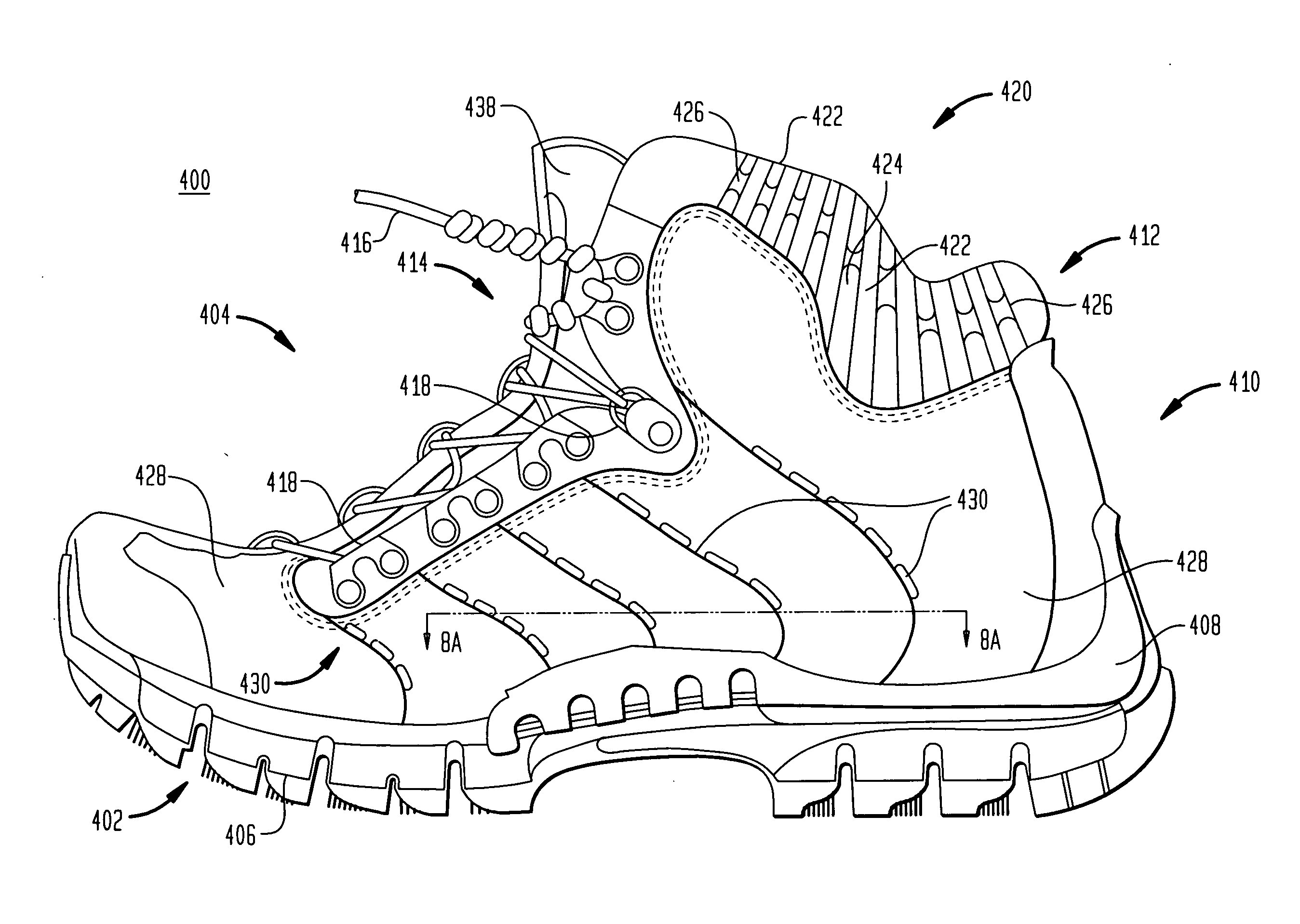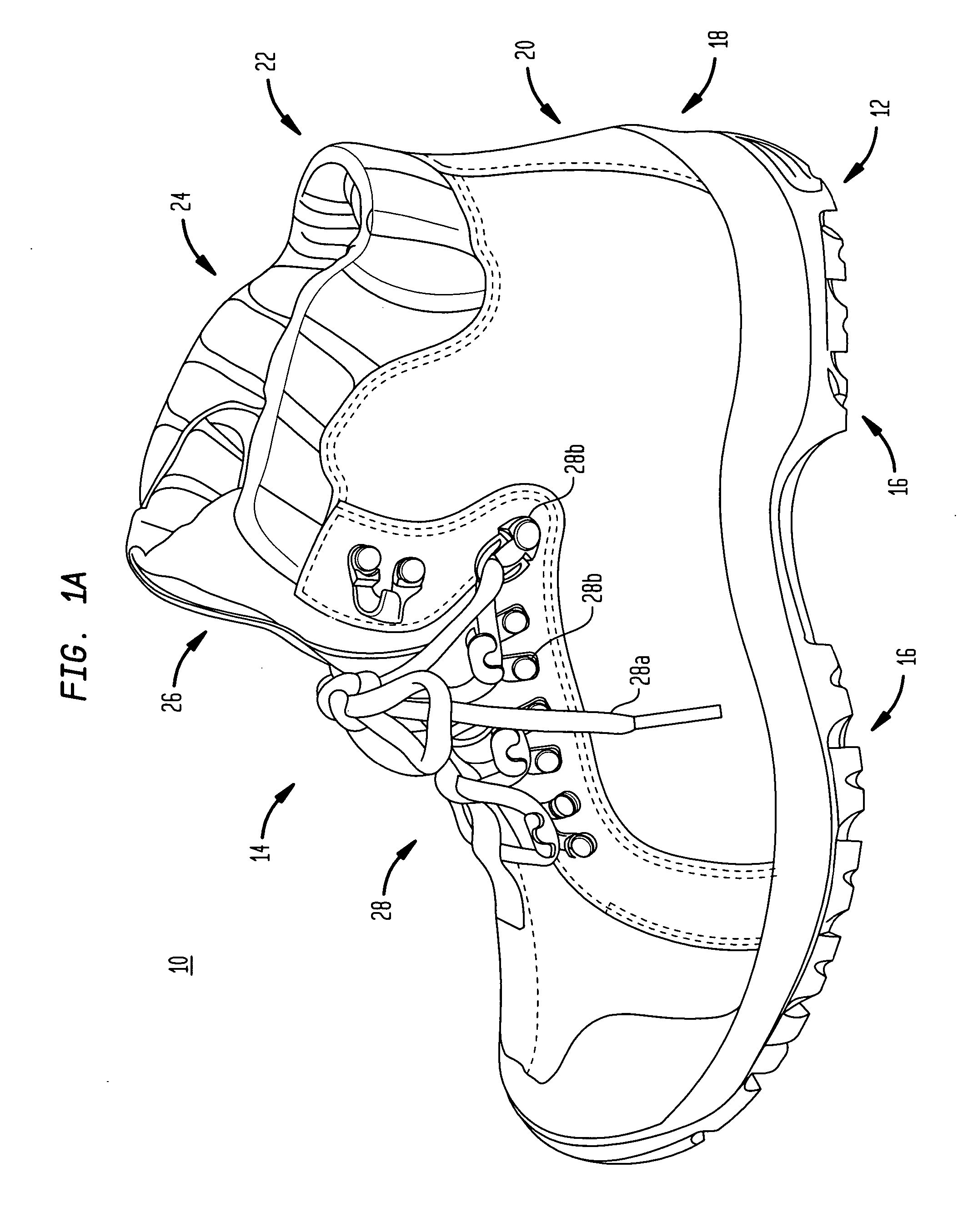Chimney structures for footwear
a technology of chimneys and shoes, applied in the field of footwear, can solve the problems of feet being very cold and uncomfortable, sweating on the feet, heat loss,
- Summary
- Abstract
- Description
- Claims
- Application Information
AI Technical Summary
Benefits of technology
Problems solved by technology
Method used
Image
Examples
Embodiment Construction
[0054] In describing the preferred embodiments of the invention illustrated in the appended drawings, specific terminology will be used for the sake of clarity. However, the invention is not intended to be limited to the specific terms used, and it is to be understood that each specific term includes equivalents that operate in a similar manner to accomplish a similar purpose. By way of example only, the term “footwear” is used herein to include, without limitation, all manner of foot coverings such as boots, shoes, sandals, athletic sneakers, loafers etc.
[0055] Both experience and research illustrate the need to preferentially handle heat and moisture removal from footwear. The inventors of the present invention conducted live trials using volunteer subjects to evaluate how airflow in the shoe microclimate affects heat and moisture retention, and, ultimately, shoe comfort. A first testing phase focused on climate control and moisture management within a hiking shoe structure. Huma...
PUM
 Login to View More
Login to View More Abstract
Description
Claims
Application Information
 Login to View More
Login to View More - R&D
- Intellectual Property
- Life Sciences
- Materials
- Tech Scout
- Unparalleled Data Quality
- Higher Quality Content
- 60% Fewer Hallucinations
Browse by: Latest US Patents, China's latest patents, Technical Efficacy Thesaurus, Application Domain, Technology Topic, Popular Technical Reports.
© 2025 PatSnap. All rights reserved.Legal|Privacy policy|Modern Slavery Act Transparency Statement|Sitemap|About US| Contact US: help@patsnap.com



